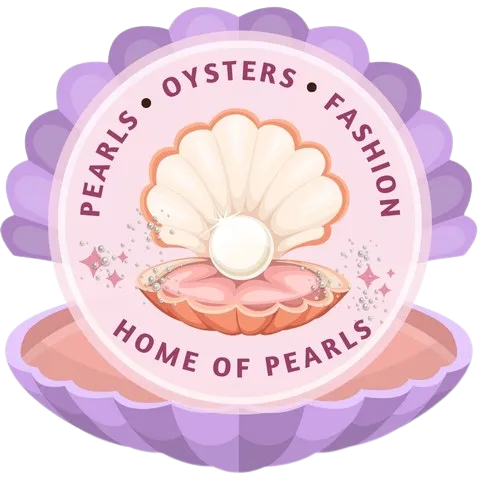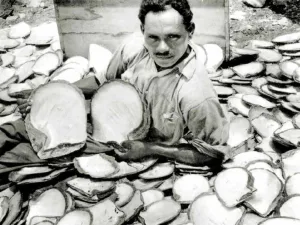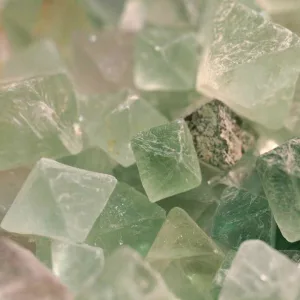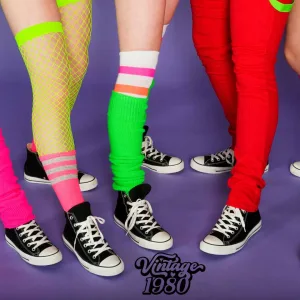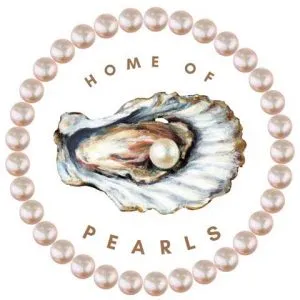Slow fashion is a growing trend that’s revolutionizing the way we think about our wardrobe. It encourages us to be more mindful of what we buy and how long it lasts, instead of opting for fast fashion pieces with short lifespans. Slow fashion emphasizes sustainability by utilizing natural materials, like pearls from oysters, in its designs. By incorporating slow fashion into your closet, you can make small but impactful changes that will help preserve the environment while still looking stylish! Learn how to embrace this movement through sustainable fabrics and proper garment care – all without sacrificing any style points!
What is Slow Fashion?
Slow fashion is an ethical and sustainable approach to fashion that focuses on quality over quantity, longevity over trends, and environmental sustainability. It encourages people to buy fewer items of clothing but of higher quality that will last longer. This means investing in pieces made from natural materials such as organic cotton, hemp, linen or recycled polyester and nylon instead of synthetic fabrics like polyester or rayon which are derived from petroleum products.
Definition of Slow Fashion: Slow fashion is a movement away from fast-fashion with its emphasis on low cost and disposable clothing towards more mindful consumption habits when it comes to buying clothes. The goal is for consumers to purchase better-made garments that will last longer while also being produced in an environmentally responsible way.
By embracing slow fashion, you can save money by investing in timeless pieces that won’t go out of style quickly, reduce your carbon footprint by choosing eco-friendly fabrics, support small businesses who produce ethically made garments, extend the life cycle of your clothes through mending and altering rather than replacing them, and help create jobs for artisans around the world who make handmade goods with traditional techniques passed down through generations.
There are many brands out there now offering slow fashion options such as Everlane, Reformation, Patagonia, Eileen Fisher and People Tree among others. These companies prioritize ethical production methods including fair wages for workers, safe working conditions free from exploitation or discrimination as well as using sustainable materials like organic cotton or recycled fibers whenever possible.
Slow fashion is an important movement that emphasizes sustainability and quality over quantity. By investing in quality pieces, shopping secondhand and vintage stores, and buying local from small businesses, you can easily incorporate slow fashion into your wardrobe.
Key Takeaway: Slow fashion encourages people to invest in quality pieces made from natural materials, supporting small businesses and artisans while reducing our carbon footprint. Benefits include: saving money, eco-friendly fabrics, ethical production methods, extending the life cycle of clothes and creating jobs.
How to Incorporate Slow Fashion into Your Wardrobe?
Invest in Quality Pieces: Investing in quality pieces is the key to slow fashion. Look for items that are made from natural fabrics like organic cotton, hemp, linen and wool. These materials are more durable than synthetic fabrics and will last longer if cared for properly. Additionally, look for clothes that have been ethically produced with fair labor practices and sustainable production methods. This ensures you’re not contributing to the fast fashion industry’s exploitation of workers or environmental damage caused by unsustainable manufacturing processes.
Shop Secondhand and Vintage Stores: Shopping secondhand or vintage stores is a great way to find unique pieces while supporting sustainability efforts. You can often find high-quality items at a fraction of their original cost when shopping these stores as well as get creative with upcycling old garments into something new. Plus, it’s an easy way to support local businesses who may be struggling due to the pandemic or other economic hardships they face on a daily basis.
Slow fashion is all about investing in quality pieces, shopping secondhand and vintage stores, buying local and supporting small businesses. Sustainable fabrics such as organic cotton, hemp and linen, as well as recycled polyester and nylon are great options for creating a wardrobe that is both stylish and sustainable.
Sustainable Fabrics for Slow Fashion
Organic cotton is a sustainable fabric that is grown without the use of synthetic fertilizers, pesticides, or other chemicals. It uses less water and energy than traditional cotton and has a lower environmental impact. Organic cotton is also softer and more durable than conventional fabrics, making it an ideal choice for slow fashion garments.
Hemp and Linen: Hemp and linen are two natural fibers that have been used in clothing for centuries. Both fabrics are strong yet lightweight, breathable, absorbent, naturally resistant to bacteria growth, and biodegradable. Hemp requires little water to grow compared to other crops like cotton so it’s considered one of the most eco-friendly fabrics available today. Linen is also highly renewable as it can be harvested multiple times each year with minimal resources required for production.
Recycled polyester (rPET) is made from post-consumer plastic bottles, helping to reduce waste while still providing durability in your clothes. Similarly, nylon can be recycled into new yarns using fewer resources than virgin materials require during the production process, thus reducing its carbon footprint significantly when compared to non-recycled materials such as polyester or acrylic fibers. By choosing these recycled fabrics you not only help reduce waste but also support sustainability efforts by creating demand for these products on the market.
Sustainable fabrics for slow fashion can help reduce environmental impacts, and when combined with proper care, your clothes will last longer. Next up: Caring for Your Clothes to Make Them Last Longer.
Caring for Your Clothes to Make Them Last Longer
Caring for your clothes is an important part of making them last longer. Washing less often and using cold water can help preserve the fabric and color of your garments. Air drying whenever possible will also help keep fabrics from shrinking or fading over time. Additionally, repairing or altering items instead of replacing them can extend their life span significantly.
Wash Less Often and Use Cold Water: To make sure your clothes last as long as possible, it’s best to wash them only when necessary. When you do need to clean a garment, use cold water on the delicate cycle in order to avoid damaging the fibers with hot temperatures or harsh detergents. This will also help prevent colors from fading too quickly over time.
Air Dry Your Clothes Whenever Possible: Air drying is another great way to make sure that your clothing lasts longer since heat from dryers can cause fabrics to shrink or fade more quickly than air drying would allow for. If you don’t have access to an outdoor line, try investing in a collapsible indoor rack so that you can hang up wet items without taking up too much space in your home.
Repairing or altering items instead of replacing them is a great way to extend the life span of a garment. Small holes or tears can be patched up, and hems that are too long can be altered by a tailor. This will save money while still allowing you to wear what you already own.
Caring for your clothes to make them last longer is an important part of the slow fashion movement. Supporting ethical brands and sustainable practices are just a few ways you can help promote this cause.
Key Takeaway: Caring for your clothes is essential to making them last longer: wash less often with cold water, air dry whenever possible, and repair or alter items instead of replacing them.
Supporting the Slow Fashion Movement
The slow fashion movement is a growing trend that encourages people to be more mindful of their clothing choices and the impact they have on the environment. By supporting this movement, we can help reduce our environmental footprint while also creating a better future for ourselves and generations to come.
Educate Yourself on the Impact of Fast Fashion: To support the slow fashion movement, it’s important to understand how fast fashion affects our planet. Fast fashion is an industry term used to describe cheaply made clothes produced quickly in order to keep up with trends. This type of production uses large amounts of energy, water, and resources which can lead to pollution and waste. Additionally, many fast-fashion companies employ unethical labor practices such as low wages or unsafe working conditions in order for them to produce these items at such a low cost. Educating yourself about these issues will help you make more informed decisions when shopping for clothing.
Spread Awareness About the Benefits of Slow Fashion: Once you’ve educated yourself about the negative impacts of fast fashion, it’s time to spread awareness. Share your knowledge with friends and family so they too can become aware of what goes into producing their clothes and why it matters. You could even start a blog or social media page dedicated solely towards educating others about sustainable fashion options.
Key Takeaway: We can help reduce our environmental footprint and create a better future by supporting the slow fashion movement. Key takeaways include: educating yourself about fast fashion, spreading awareness about sustainable options, and using less energy, water, and resources.
FAQs in Relation to Slow Fashion
What is considered slow fashion?
Slow fashion is a movement towards more sustainable and ethical production of clothing. It focuses on quality over quantity, with an emphasis on buying fewer but better-made items that last longer. Slow fashion encourages people to buy less often, repair or upcycle garments when possible, and choose materials that are eco-friendly. This approach also emphasizes the importance of craftsmanship and traditional techniques in garment production, as well as the value of local communities and their skillsets. By embracing slow fashion principles, we can create a more conscious relationship between consumers and producers while reducing our environmental impact.
What are some examples of slow fashion?
Slow fashion is a movement that focuses on sustainability and quality over quantity. It emphasizes buying fewer, better-made pieces of clothing that will last longer and are more environmentally friendly. Examples of slow fashion include investing in timeless wardrobe staples such as classic denim jeans, well-tailored blazers, or high-quality leather boots; shopping secondhand or vintage items; upcycling old clothes into something new; repairing damaged garments instead of throwing them away; choosing natural fibers like cotton, linen, silk, wool and hemp for their breathability and durability; opting for locally made goods to reduce the environmental impact from transportation costs. Slow fashion encourages consumers to be mindful about what they buy by considering its longevity and impact on the environment.
What are characteristics of slow fashion?
Slow fashion is a movement that promotes sustainability and ethical production in the fashion industry. It encourages people to buy fewer, higher quality items that will last longer and reduce waste. Slow fashion also focuses on using natural materials such as organic cotton, linen, hemp or wool instead of synthetic fabrics like polyester or nylon. Additionally, slow fashion emphasizes craftsmanship and fair labor practices for workers in the garment industry. Finally, it advocates for buying from local businesses rather than large corporations to support small-scale artisans who are creating unique pieces with attention to detail and quality.
What is slow fashion and why is it important?
Slow fashion is a movement that encourages the production of clothing and accessories in an ethical, sustainable, and eco-friendly manner. It seeks to reduce the environmental impact of fast fashion by promoting slow processes such as handcrafting, natural dyes, local sourcing of materials, and upcycling existing garments. Slow fashion also emphasizes quality over quantity with longer lasting pieces that are made to last for years instead of just one season. By supporting these practices we can help protect our environment while creating beautiful pieces that will stand the test of time.
Conclusion
In conclusion, slow fashion is a great way to make sustainable and ethical choices when it comes to your wardrobe. It encourages us to invest in quality pieces that will last longer and support the environment. By choosing fabrics like organic cotton, hemp, linen or recycled materials, you can help reduce our environmental footprint while still looking stylish. Taking care of your clothes properly with regular washing and repairs can also extend their life span significantly. Finally, by supporting the slow fashion movement we are helping to create a more conscious industry for future generations. So let’s all do our part by embracing slow fashion!
